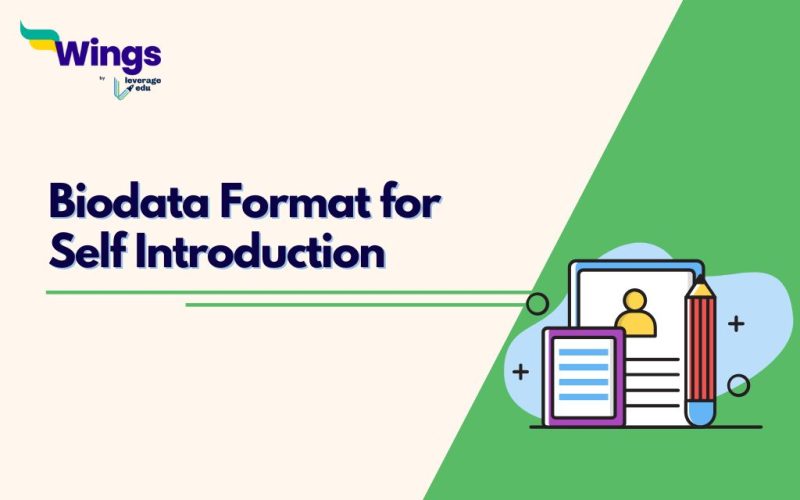A biodata is a document that provides a comprehensive overview of an individual’s personal and professional information. It is often used for job applications, scholarships, and other academic or professional spaces. It is important that your biodata looks presentable and effective to impress your target audience. In this, blog we have mentioned some tips and biodata format for self-introduction.
This Blog Includes:
What is a Biodata?
A biodata is essentially a self-introduction document that allows the reader to get a quick snapshot of the individual’s background, skills, and accomplishments. The major use of biodata is to give clear information about the candidates to a person, or organization. There is a difference between CV and Resume & Biodata.
Format of Biodata for Self Introduction
The biodata format for self-introduction typically includes the following sections according to their placement in the biodata.
- Personal Information: This section includes the individual’s name, age, address, contact information, and any other relevant personal details.
- Educational Background: This section includes information on the individual’s academic qualifications, including their degree(s), the name of the institution(s) attended, and any honours or awards received.
- Professional Experience: This section provides a summary of the individual’s work experience, including their job titles, companies worked for, and key responsibilities and achievements.
- Skills: This section outlines the individual’s key skills and competencies, including any specialized training or certifications.
- Interests and Hobbies: This section provides insights into the individual’s interests and hobbies, which can help the reader to better understand their personality and character.
Tips for Creating an Effective Biodata in Self-Introduction
Keep It Concise: A biodata should be brief and to the point, highlighting only the most important information. Try to avoid using unnecessary words and information that is not relevant to the position or opportunity.
Customize it for the Audience: When creating a biodata, it is important to tailor it to the specific needs and interests of the intended audience. For example, if applying for a job, focus on the skills and experiences that are most relevant to the position.
Use Clear and Simple Language: Use clear, concise language when describing your experiences and achievements. Avoid using jargon or technical terms that may not be understood by the reader.
Highlight Your Achievements: When describing your professional experiences, focus on your accomplishments and achievements rather than just listing your job responsibilities. This can help to demonstrate your skills and capabilities.
Be Honest: It is important to be truthful and honest when creating a biodata. Avoid exaggerating your accomplishments or skills, as this can undermine your credibility and harm your chances of success.
To learn how you can write your resume as a fresher, watch this video:
Also Read: How to Say Hello in Different Indian Languages.
FAQs
Biodatas are basically for knowing the personal details of the candidates. Here, it is not mandatory that you have to add work experience. It is only for knowing comprehensive details of the person.
Your biodata should not be in brief and to the point, ideally no more than two pages. It should include only the most important and relevant information for the intended audience.
(1) Professional photo of the candidate
(2) Personal details
(3) Few professional details
(4) Interests and Hobbies
These are the major elements of Biodata.
You can write your own biodata. Ensure that the biodata consists of your details like your name, and email address. It should also contain information regarding your education, work experience, skills, and achievements.
Provide the reason why you are applying for this role. Also, highlight your strengths and your experience. These must be explained in a few lines.
The most popular in-demand skills are communication skills, problem-solving skills, leadership, critical thinking, time management, customer service, and teamwork. You can develop these skills through education and work experience.
A biodata is an important document that can help individuals to introduce themselves in a clear and concise manner. By following the tips outlined in this blog, you can create an effective biodata.
For the latest blogs on Interview Preparation, Careers and more, follow the Leverage Edu website and YouTube channel.
 One app for all your study abroad needs
One app for all your study abroad needs















 60,000+ students trusted us with their dreams. Take the first step today!
60,000+ students trusted us with their dreams. Take the first step today!

